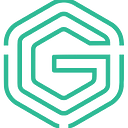With the speed at which technology is advancing, readers can be forgiven for getting confused about the terminology. To make it simple, even for those who are not native to the digital sphere, we gathered the key differences between DeFi vs Web 3.0. Let’s explore the concept of Decentralised Finance and its role in the new Internet together with Grapherex.
What Is DeFi?
Most of us are more familiar with centralised finance (CeFi). In this case, there is a central authority that manages all the money flows and can monitor individual transactions, verify deposits and withdrawals, and issue loans. The authority is overseen by the government and the banks, and your relations with them are based on trust.
An alternative approach to this is decentralised finance (DeFi). These are pieces of code that run online and act as banks. They are open to anyone, they’re censorship-resistant, and they don’t require you to trust them. DeFi is based on three main things: blockchain technology, cryptography, and smart contracts.
All the functions of a traditional bank (and even more) are available with DeFi. More importantly, the transactions are faster, and the maintenance is much cheaper. Your money is secured by sophisticated protocols, and your transactions involving digital assets — cryptocurrencies — are encrypted, so you may enjoy privacy and safety.
What Is a DEX?
To interact with digital assets, you’ll need software: usually, this involves cryptocurrency wallets and exchanges. A decentralised exchange (DEX) is a platform that connects cryptocurrency buyers and sellers, allowing them to exchange tokens, trade, invest, and store them. Unlike centralised platforms (CEXs) such as Binance or Coinbase, DEXes don’t allow for exchange between fiat and crypto. Instead, they exclusively trade cryptocurrency tokens for another crypto.
DEXs use smart contracts that independently perform according to their pre-specified conditions and record each transaction in the blockchain so that the system remains transparent. DeFi platforms ensure that private keys, which give users access to their money, are only controlled by the users.
The leading decentralised exchanges are Uniswap, PancakeSwap, dYdX and 1inch. The main services that DEXs offer are peer-to-peer transactions and fast cryptocurrency conversion. Additionally, users may participate in decentralised governance via voting, create a community, and even earn passive income by providing liquidity to the pool.
The Grapherex platform offers secure and easy-to-use cryptocurrency exchange services and a highly protected wallet to store your crypto. If you are interested in DeFi, we can help you take the first steps: check out our app and contact us if you have any questions.
What Is Web 3.0?
Today we live on the verge of a new digital era: Web 3.0. We still have Web 2, which introduces a user-focused and interactive internet and allows us to share data in a more efficient and equitable manner than previously. This includes websites, social media platforms like Facebook, online banking, and many other applications.
There is a belief that Web 2, though still popular, slowly gets outdated due to its heavy reliance on a centralised architecture.Companies rent data centres and expensive equipment to maintain centralisation. So, Web3 helps reduce costs.
Web 3.0 primarily relies on blockchain technology, which has been a hot topic in recent years. It promises decentralisation, transparency, autonomy, more equitable access to everything you may find on the Internet, and a far more democratised economic strategy.
Just as the launch of Bitcoin in 2009 became the starting point for both blockchain and crypto, the launch of Ethereum in 2015 introduced a new structure that allows blockchain technology to be expanded to approach Web3. Ethereum smart contracts allow decentralised networks to create a wide range of innovative applications related to fundraising, decentralised finance (DeFi), non-fungible tokens (NFT), gaming, decentralised autonomous organisations (DAO), stablecoins, and even the whole metaverse.
Comparing Web3 and Web2, in the latter, the risk of vulnerabilities is higher because there is a human factor and a possibility of errors. Web 3 is based on more advanced technologies, so most of the information is under the control of secure software. As a modern digital service provider, Grapherex also contributes to the development of Web3.
Shared Features of DeFi & Web 3.0
Now that you know what DeFi and Web 3.0 mean and how they work, let’s see what they have in common. Here is a list of the important features that unite these two systems:
- Decentralised. There is no central authority but a widely distributed global network of nodes that ensures the operation of the network.
- Permissionless and open. Users do not need permission from a centralised organisation to use the network. Open public blockchain systems work in such a way that they allow anyone to participate.
- Programmable. Programmability is the creation of a network infrastructure capable of performing an almost unlimited number of iterations and changes depending on the purpose of use. It’s implemented using smart contracts, with their terms written in code.
- Non-custodial. Users’ funds are not stored in a bank or financial service provider. Instead of relying on centralised systems, clients can use numerous financial instruments, for example, lending, borrowing, placing bets and others, on their terms.
- Economic and governance systems. Both DeFi and Web3 use asset tokenisation for their economies and decentralised governance mechanisms. Using several blockchain and DeFi platforms gives users an important role in the future development of platforms.
Summing Up
Web 3.0 is the third generation of the Internet, characterised by transparency, openness, decentralisation, and ubiquity. It usually involves built-in complex financial and governance ecosystems and uses Artificial Intelligence (AI), Machine Learning (ML), and 3D graphics.
DeFi functions within the framework of Web3 that combines all money-related features. It is a financial sector created using smart contract technology, which makes transactions fast, simple, accessible, and inexpensive. If you want to explore a DeFi application and try to delve into modern finance, our experts at Grapherex can advise you. Start your journey with us!
